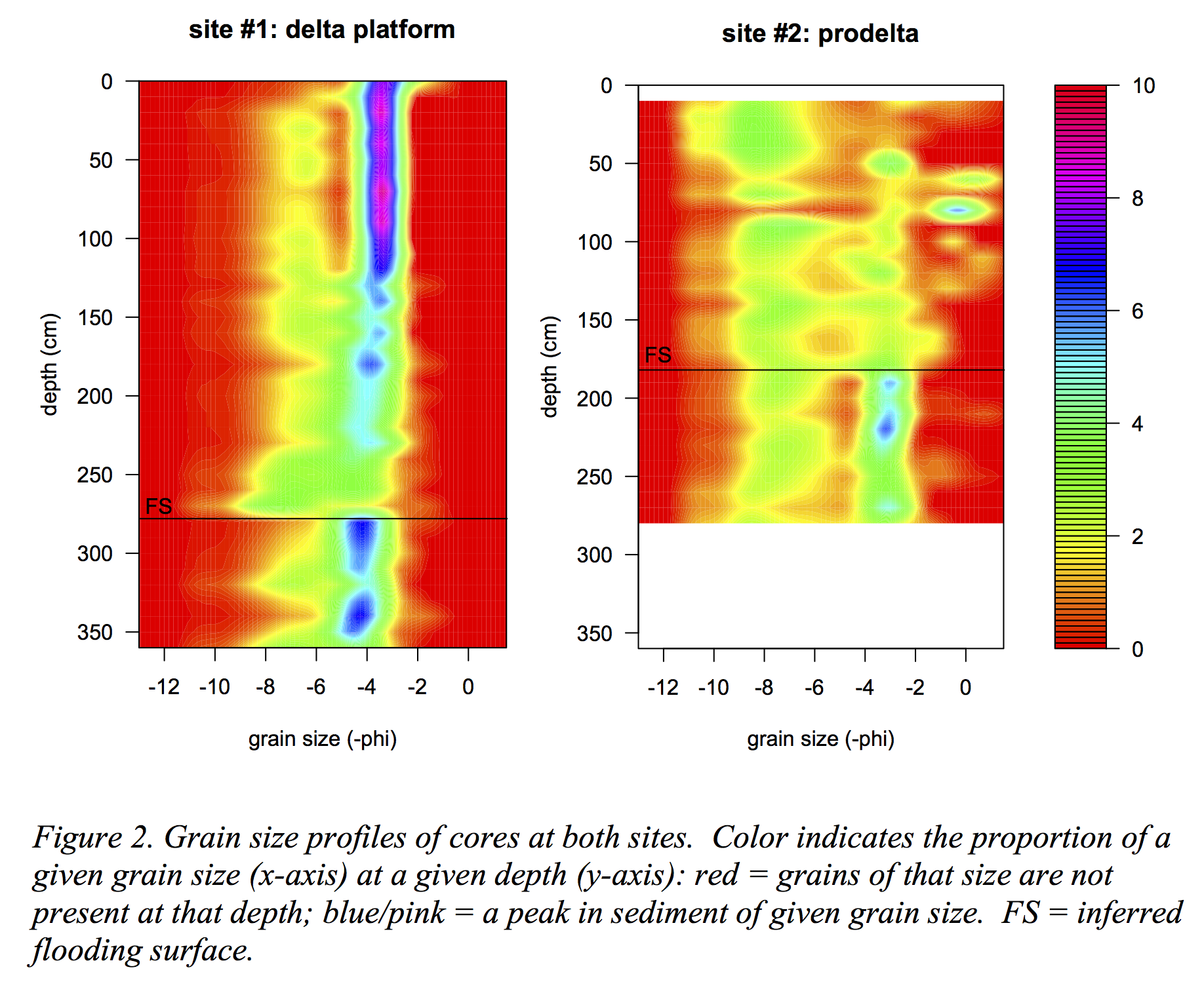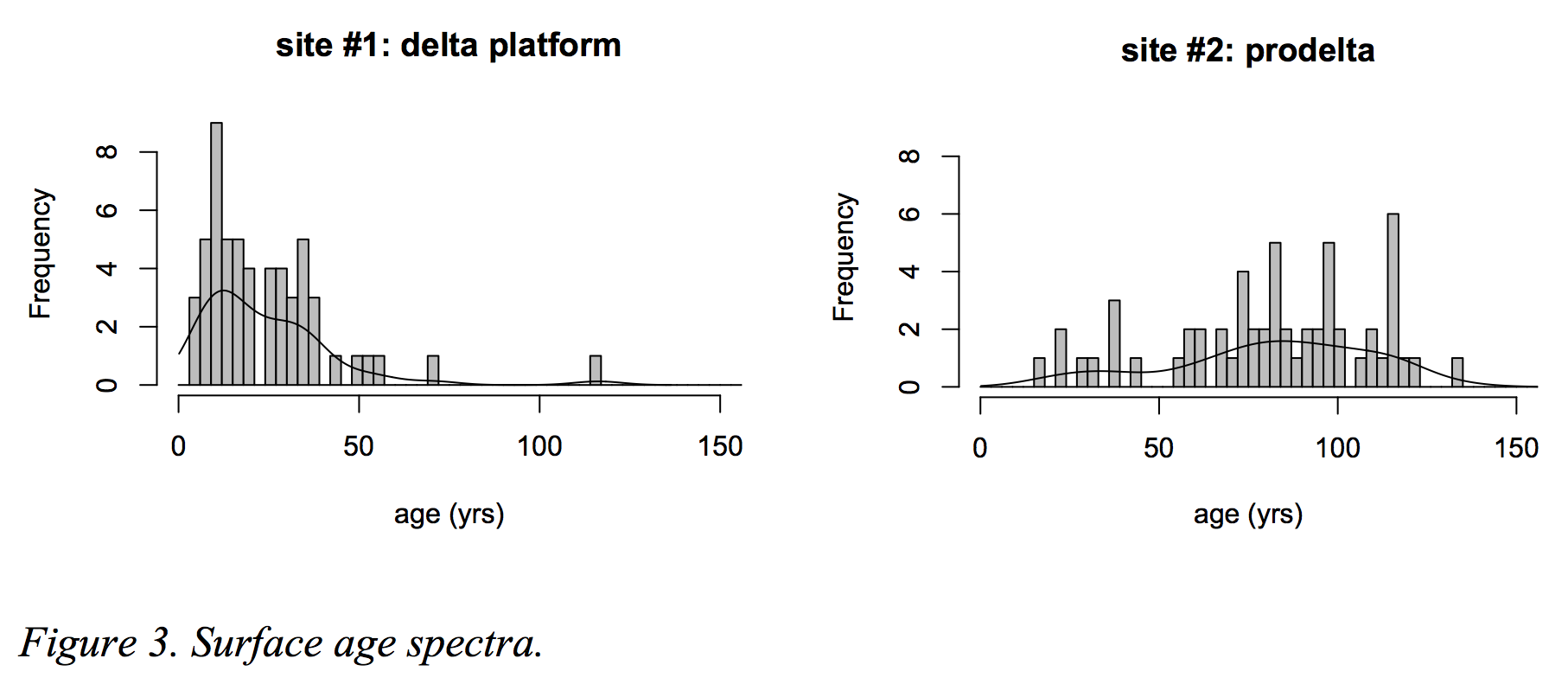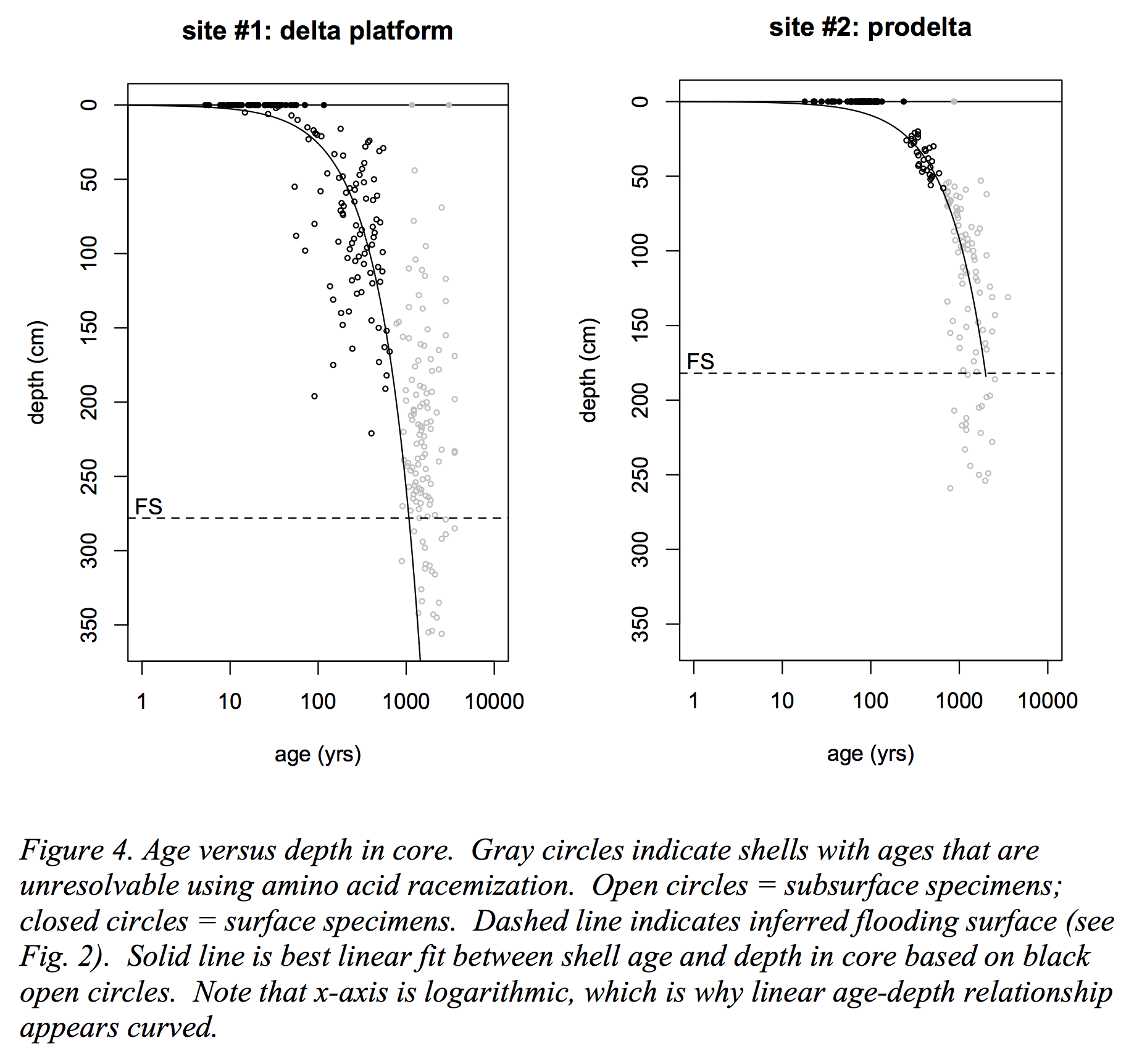Reports: ND854947-ND8: Using Postmortem Shell Ages to Reconstruct Sediment Burial Pathways
Thomas D. Olszewski, Texas A&M University
Introduction
Oil and gas are generated and reside within sedimentary rocks, making an understanding of sediment deposition critical for the discovery and extraction of hydrocarbons. Over many decades, sedimentary geologists have built a sophisticated, process-based understanding of depositional environments at Earth's surface and the stratigraphic architecture of sedimentary rocks in the subsurface. However, as sediments transition from the surface to the subsurface, they experience a variety of mixing and reworking processes that can significantly influence their porosity, organic content, and stratigraphic resolution. A lack of quantitative constraints on the extent of sedimentary reworking after initial deposition limits the ability of sedimentary geologists to predict the characteristics of hydrocarbon-bearing rocks.
The objective of this research is to elucidate how the temporal resolution of sediments changes as they transition from the surface to the subsurface using the postmortem ages (i.e., time since death) of molluscan shells to quantify reworking in a depositional system. Because shells are generated within a depositional system (unlike detrital sediment grains), their postmortem ages reveal how long it took to get from their living habitat (the surface) to their burial location within a sediment column, making them natural tracers of depositional and burial pathways. Although methods exist for determining the bulk rate of burial in recent sediments, shells can provide previously inaccessible information on the duration and extent of mixing within a sediment column as well as the degree of sediment recycling within a larger depositional system.
Sedimentology and Stratigraphy
Two vibracores were collected from Copano Bay, Texas (Fig. 1): site #1 is on the delta platform of the Aransas River and site #2 is from the prodelta in the interior of the bay. The cores provided both shelly material for dating as well as primary sedimentological data for defining facies and identifying sedimentary processes.
At present, the delta platform is dominated by very fine/fine grained sand, whereas the prodelta is dominated by very fine silt and clay (Fig. 2). The bottom of the core at site #1 is composed of very fine sand, which abruptly changes to silt and clay 275 cm below the surface and subsequently grades upward to very fine/fine grained sand at the surface. The bottom of the core at site #2 is also fine sand, which shows a sharp change to muddy sediment at 175 cm. The sharp changes in grain size at both sites are interpreted to represent a flooding surface at the base of an actively accumulating parasequence that records progradation of the Aransas River delta (Fig. 2).
Postmortem Shell Ages
Shells of the bivalve Mulinia lateralis were collected from surface sediment and picked from the core approximately every centimeter. Postmortem ages of shells were estimated using the D:L (right-handed to left-handed) ratio of amino acid enantiomers calibrated to time using 10 shells collected live (0 years old) and 13 shells dated using carbon-14.
Surface age distribution. The postmortem age spectra of shells at the surface from the two sites differ substantially (Fig. 3). The spectrum from the delta platform is highly skewed with a median age of 19.5 years and an interquartile range of 22.4 years. In contrast, the spectrum from the prodelta is much more symmetrical with a median age of 83.6 years and an interquartile range of 33.8 years. Overall, shells from the prodelta are older, show greater time averaging, and appear to be less influenced by rapid destructive loss than the delta platform.
Subsurface age distribution. In the cores from both sites, shell ages increase with depth until they reach an age of ~700 years (Fig. 4). This maximum age is an artifact resulting from equilibration of the D:L ratio of amino acid enantiomers – i.e., the ages of shells older than this limit cannot be determined using amino acid racemization. In the core from the delta platform (site #1), the linear relationship between age and depth has a slope of 0.26 cm/year, but the scatter of ages on a single stratigraphic horizon spans several 100s of years. In the core from the prodelta (site #2), the slope is 0.092 cm/year but the scatter of ages along a horizon only spans several 10s of years. These results indicate that the average rate of sedimentation on the delta platform is ~2.5x faster than the prodelta, but that the degree of time averaging is an order of magnitude lower on the prodelta than the delta platform.
Preliminary Results and Implications
Overall, these preliminary results provide valuable insight into the relationship between the rates of deposition and reworking in marginal marine environments and how they affect time averaging – i.e., the ability to resolve time in stratigraphic successions. Relative to the delta platform setting, the deeper prodelta has a slower rate of accumulation, leading to a greater degree of temporal condensation, but due to less within-column bioturbation, it retains a finer temporal resolution. The overall result is that the range of the age spectrum at the surface in the prodelta is preserved in the subsurface, whereas mixing of sediment continues in the subsurface long after deposition on the delta platform. In contrast the predicted outcome, there appears to be little evidence for incorporation of allochthonously sourced shells in either the prodelta or delta platform settings. Integrating these measurements on sediment accumulation rate and within-column mixing with the parasequence framework provides a basis for understanding how sediment mixing and temporal resolution change through a stratigraphic succession.
Student Impact
The primary student impact of this project has been the support of Ryan Samuels, who will complete his M.S. degree in Geology at Texas A&M University under the supervision of PI Olszewski in 2016. ACS-PRF funds have provided him with two years of support, the opportunity to carry out field work on the Texas coast, and the means to travel to the Amino Acid Geochronology Laboratory at Northern Arizona University to learn how to carry out amino acid dating.















